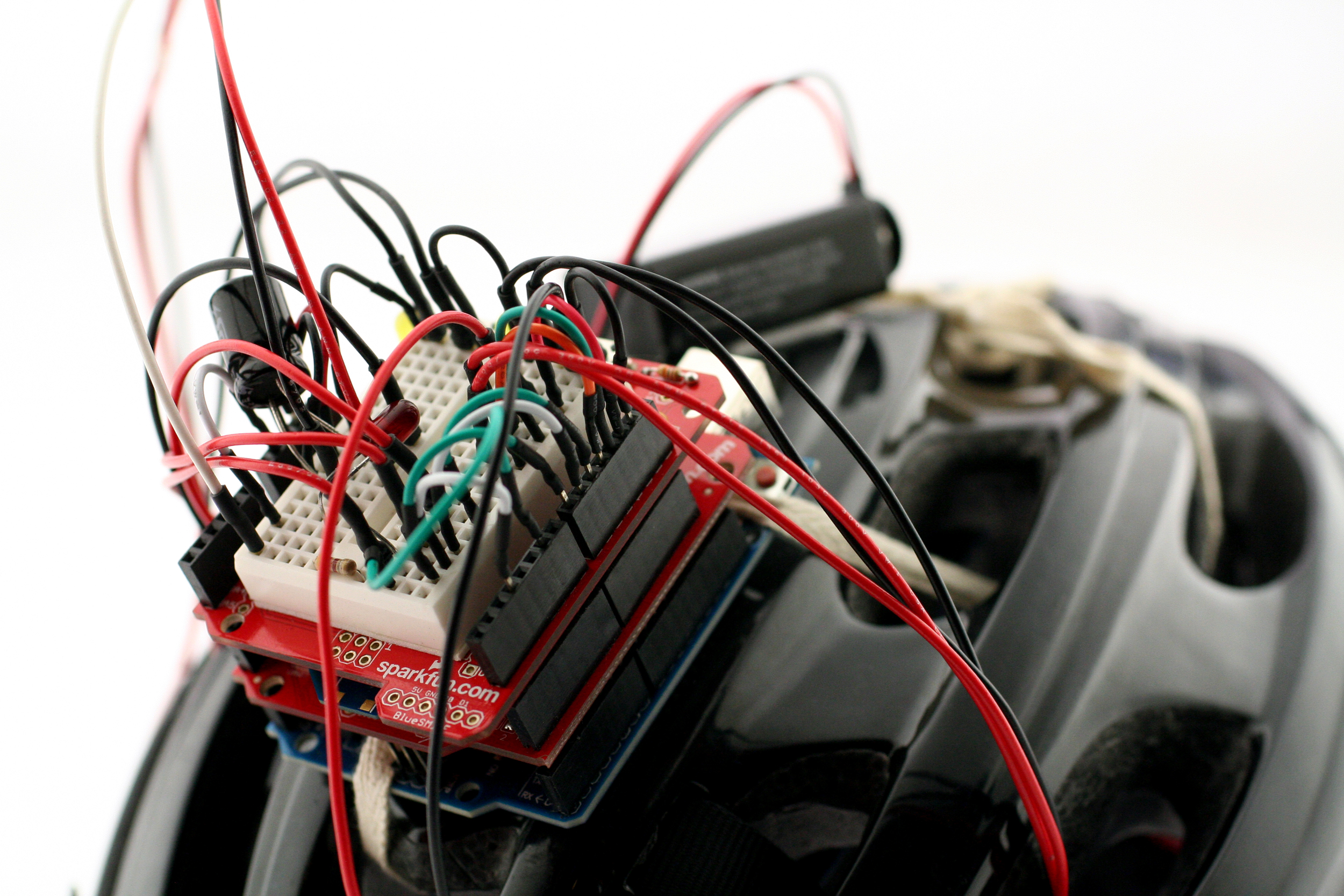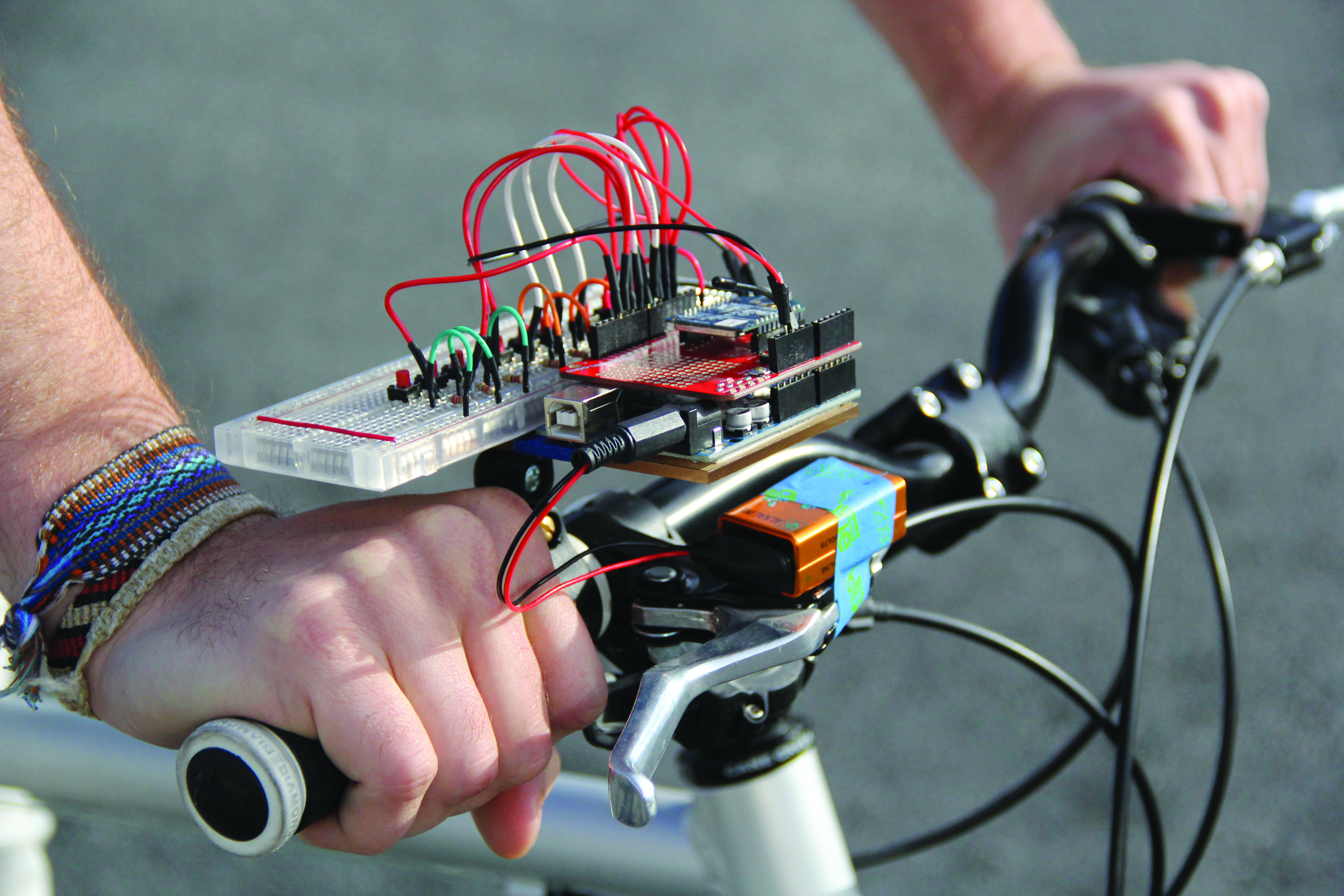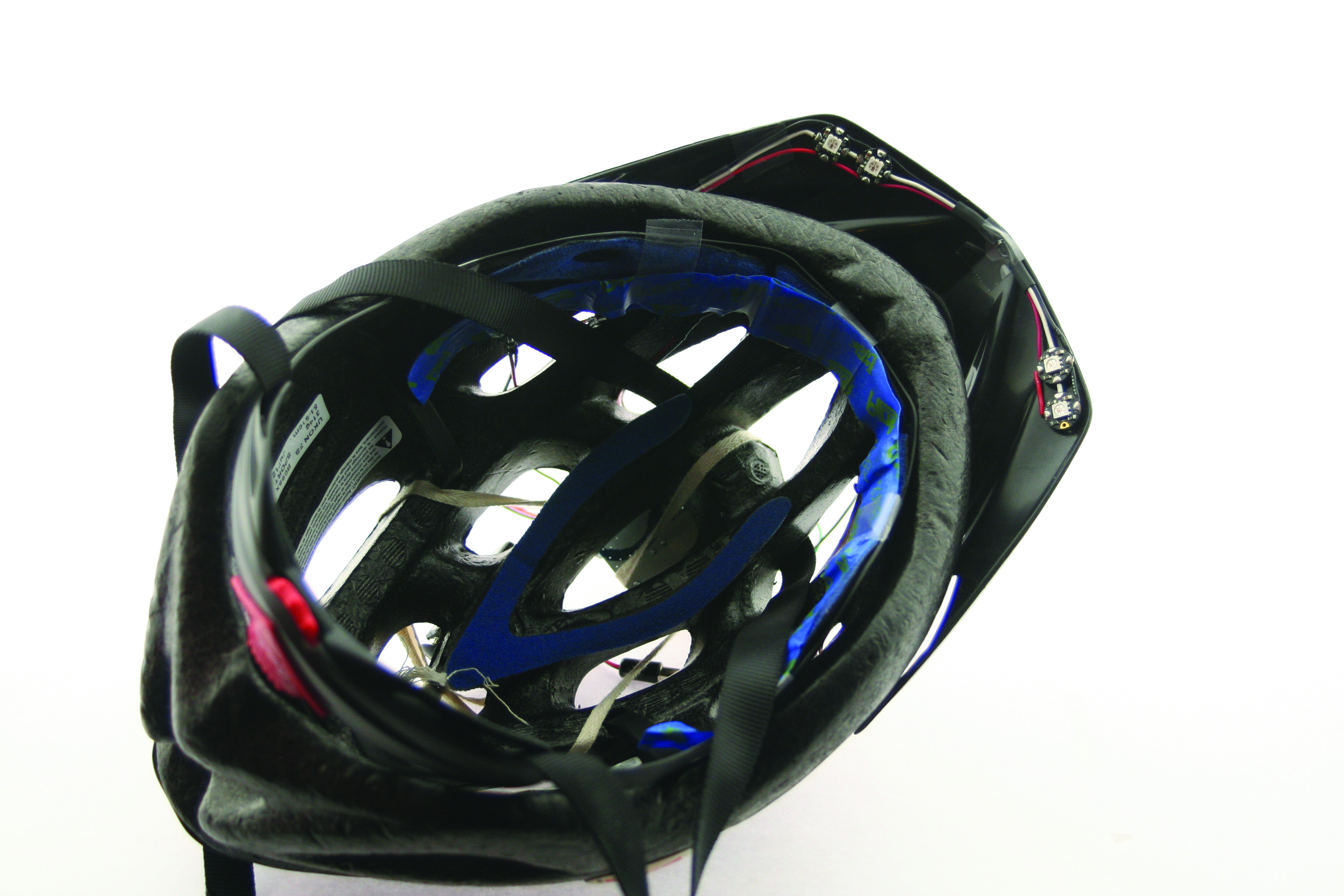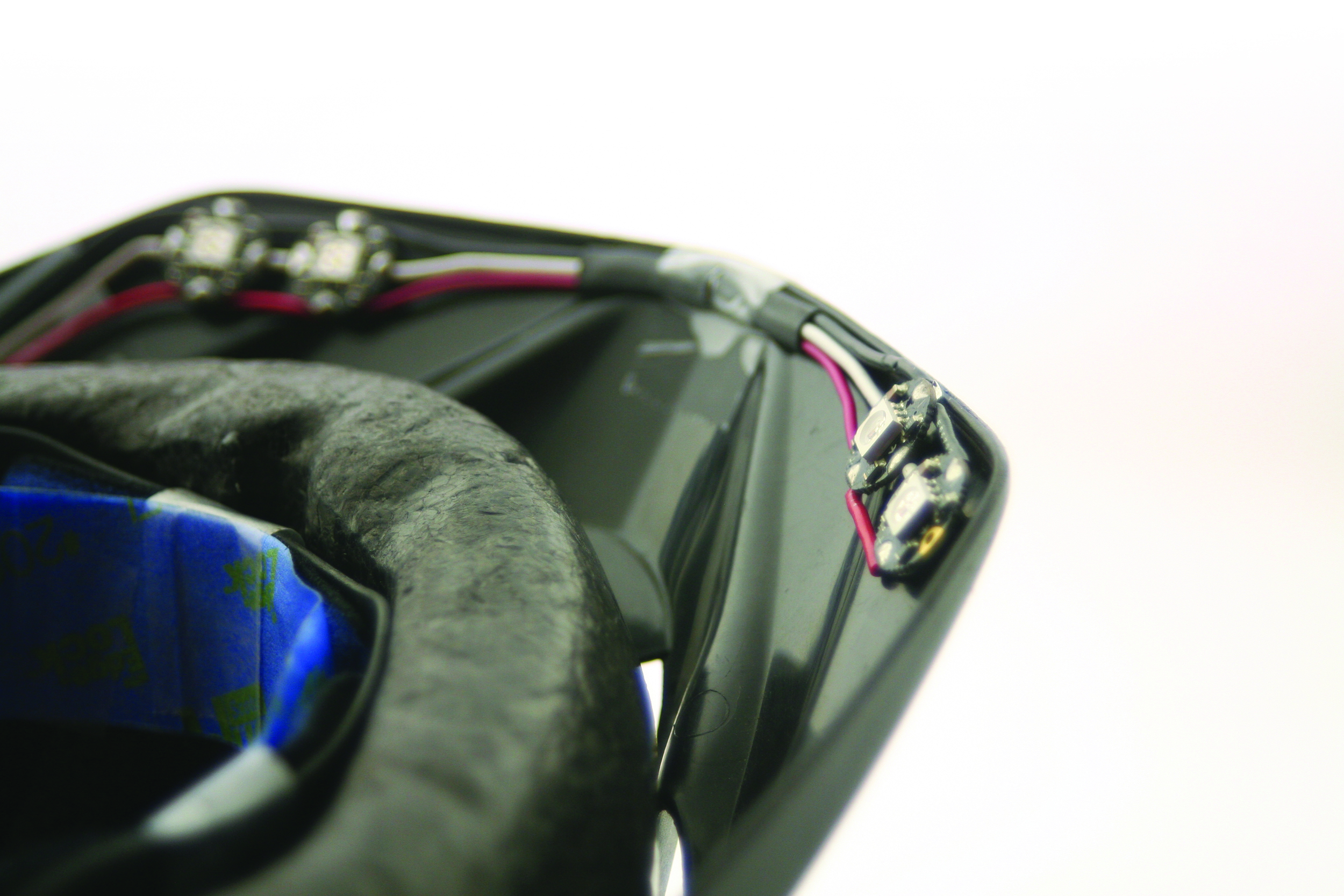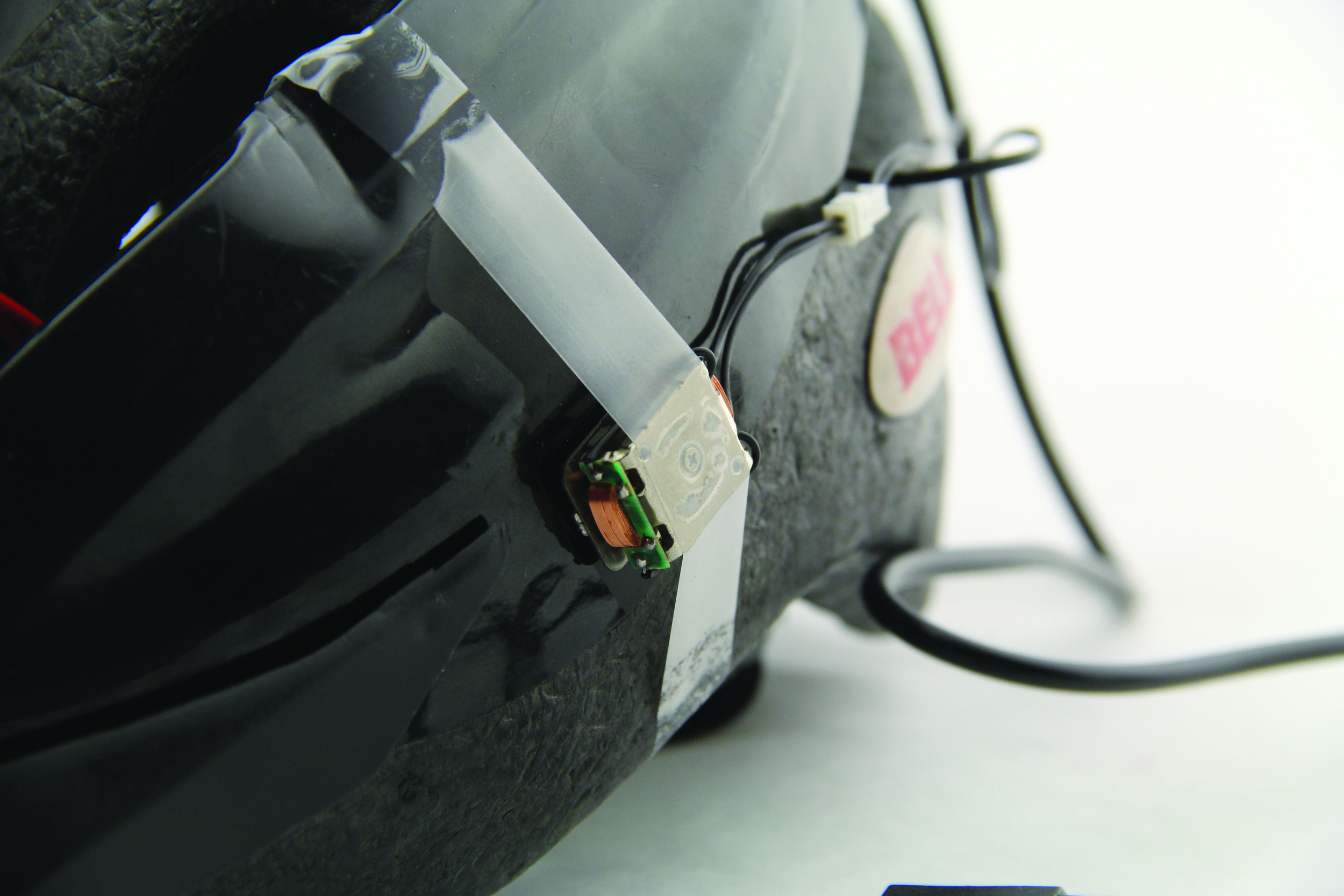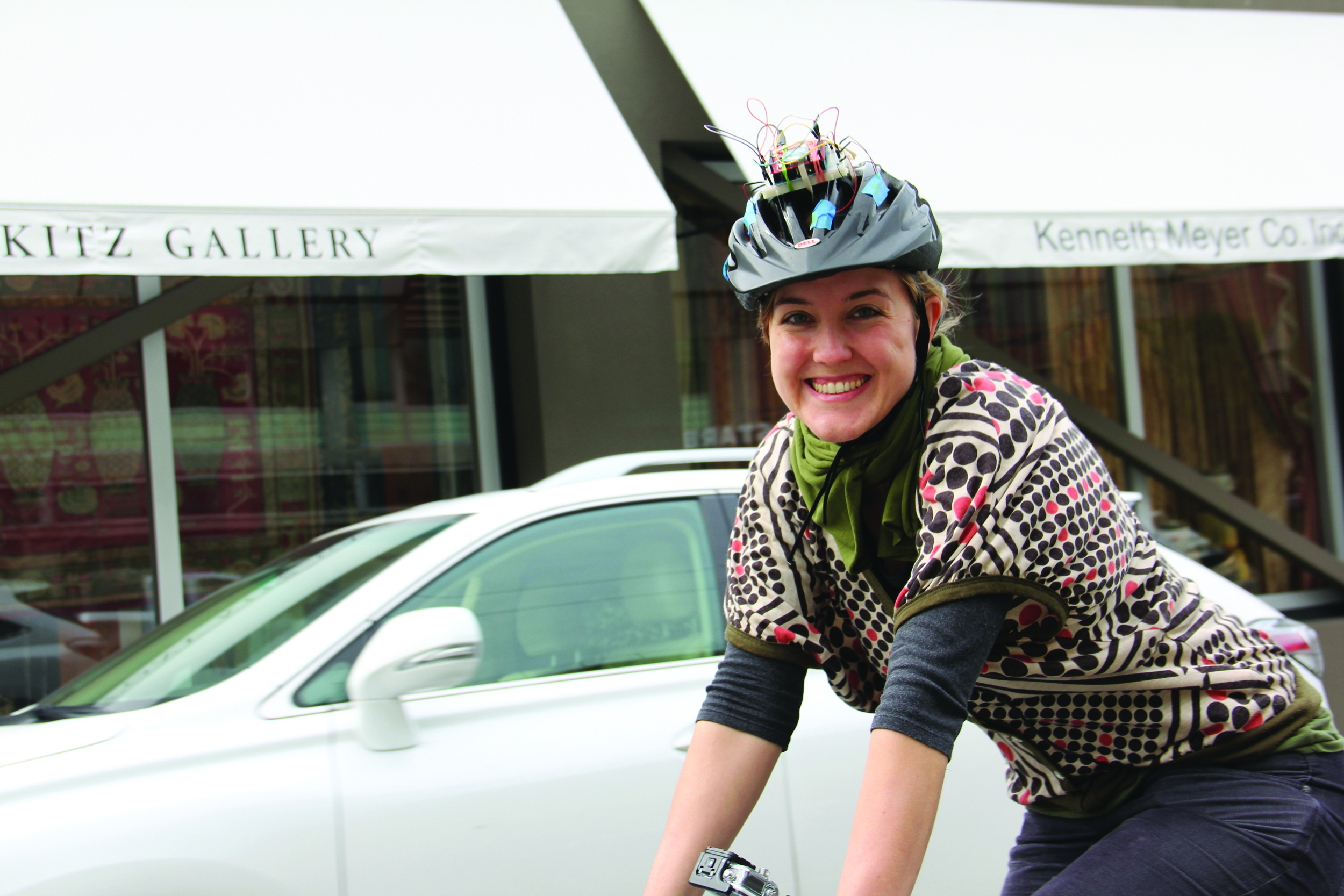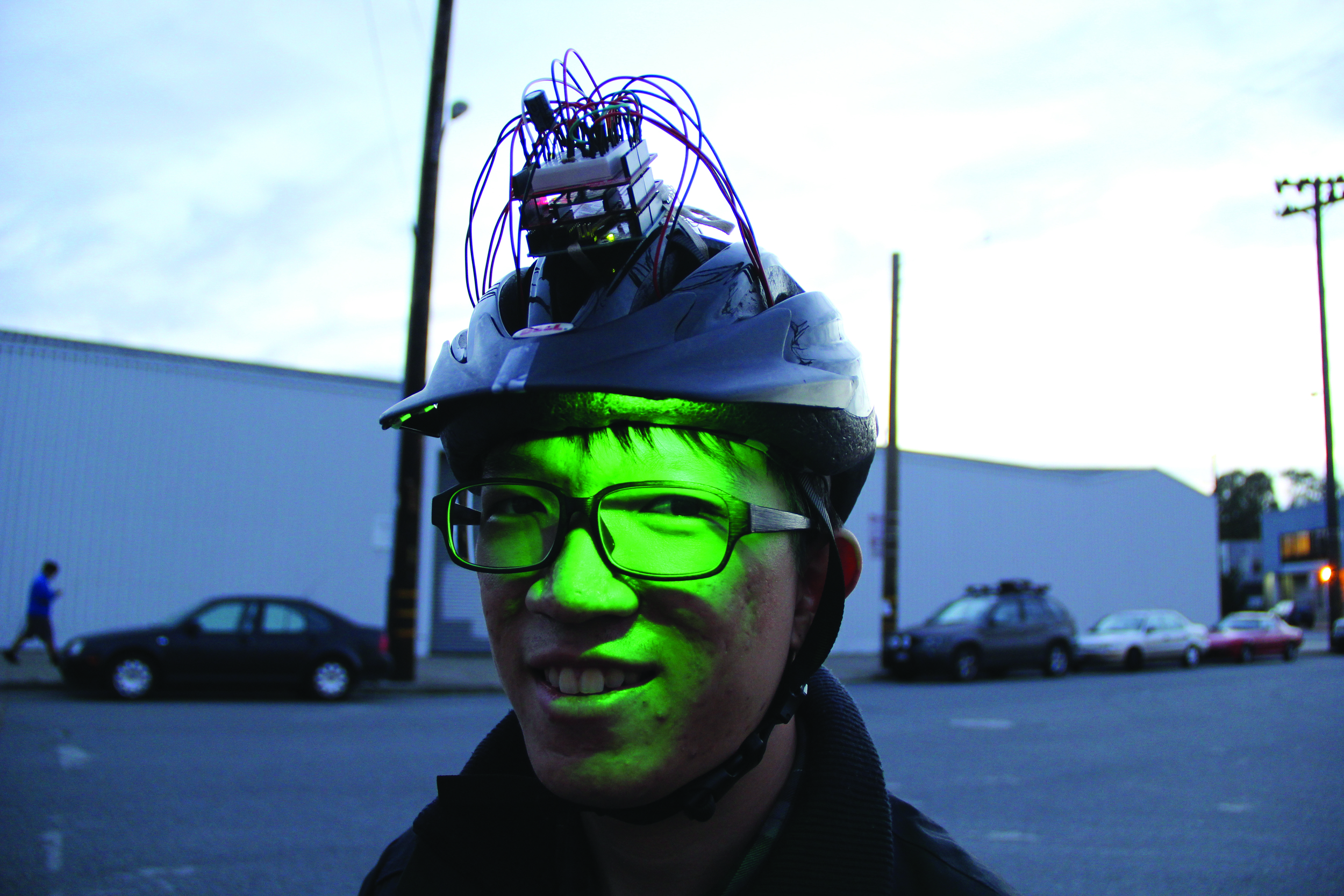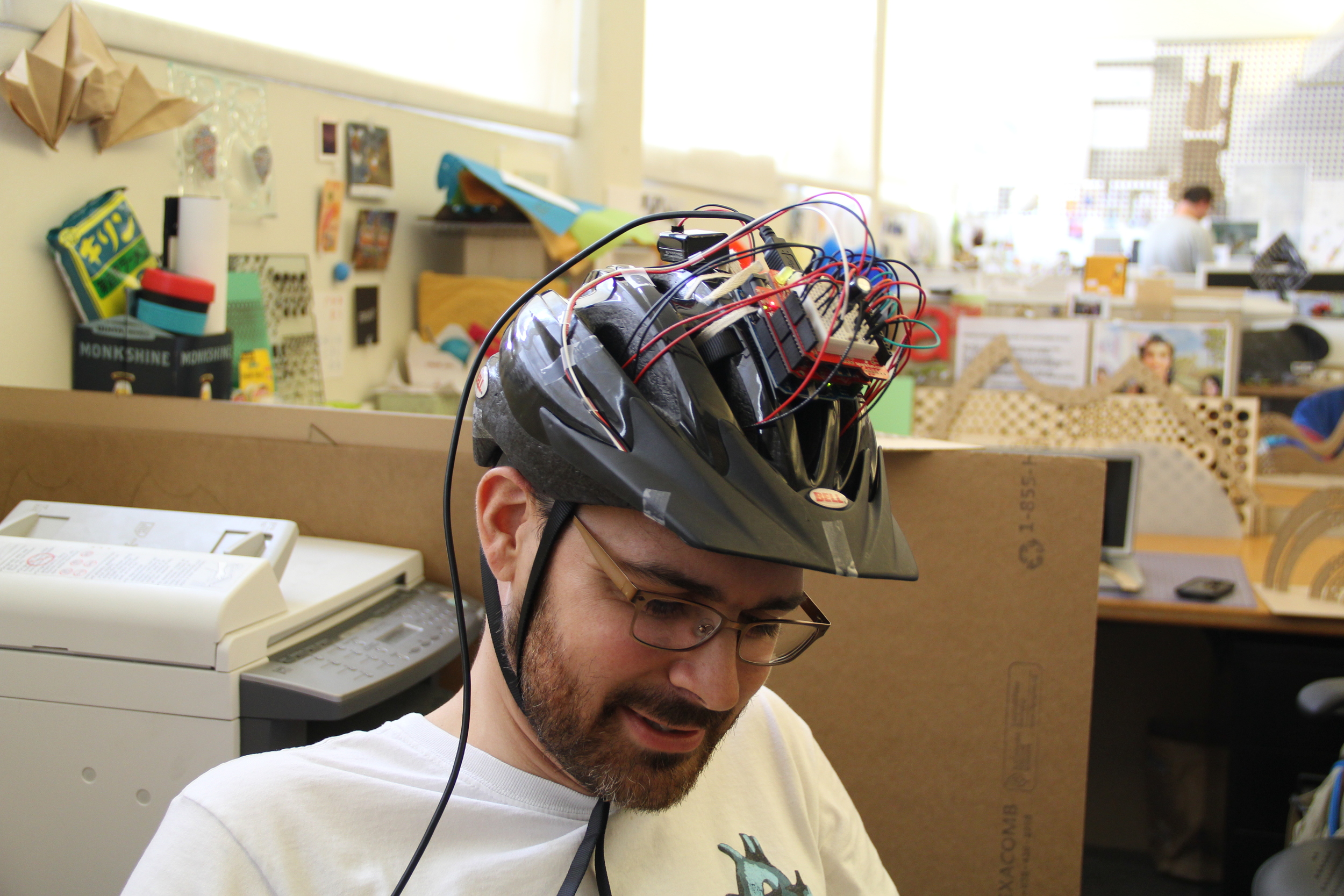Opportunity
Using the navigation tools from smartphones and digital technology located in the bicycle helmet, it is possible to create ways to direct cyclists through those last hundred meters.
Multimodal Interaction
Three different modes of interaction work together to communicate clear directions to the cyclist, eliminating the need to stop and look at a map. Each mode serves a specific purpose and is implemented at different times during the ride.
Subtle vibrations are very effective in communicating immediate way finding directions. For example, when a right turn is coming up shortly, a sequence of short vibrations on the right side of the helmet serve as the cue for a right turn.
Lights indicate the next move the cyclist should take. Immediately after the cyclist executes an action, the cue for the following step is indicated. The continuous availability of the light cue allows the cyclist to rapidly glance at the visor for reassurance of the following move.
Sound is adequate for delivering rich information in the form of short, spoken messages. Speed, time, ETA, traffic, or information about the surroundings, are just a few of many possible messages that can make the cycling experience more enjoyable.
Prototyping
The prototype was built using Arduino and Xbee modules. This platform allowed for testing multiple iterations at the same time.
Testing
The prototypes were tested by several participants and in different conditions. All users were cyclists – each with a different level of experience.
For a more in-depth look at the project, please feel free to download the project's document:
Sensory Helmet: Haptics, lights and sound for bicycle navigation







